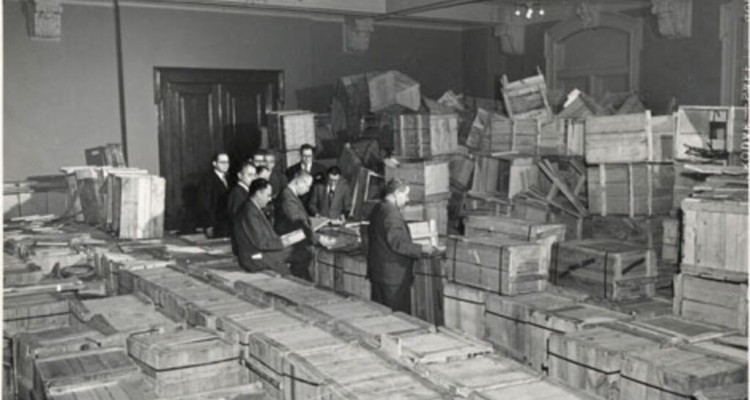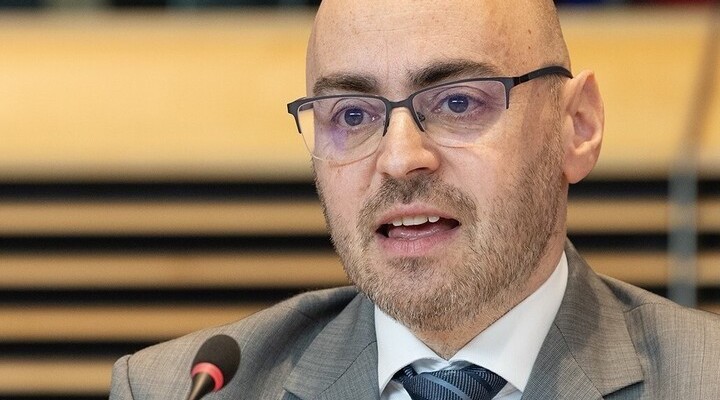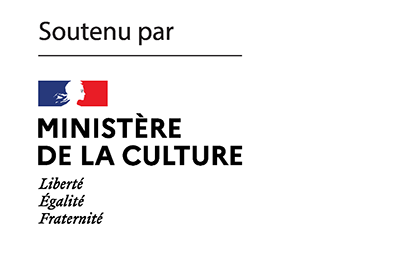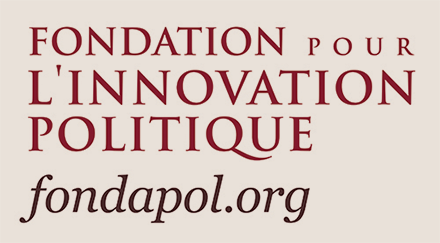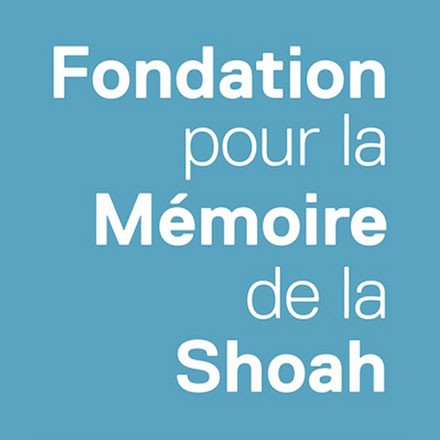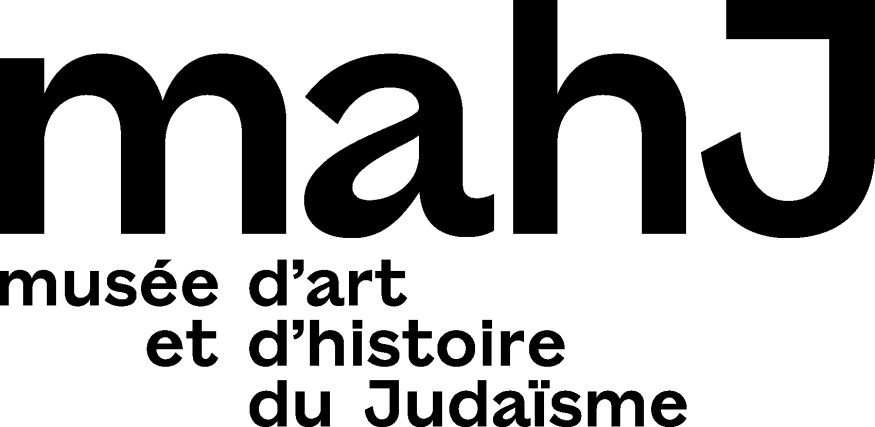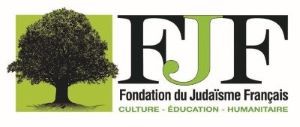From March 18 to October 3, the Jewish Museum in Frankfurt is presenting the exhibition “Revenge: History and Fantasy” (“Rache, Geschichte und Fantasie”). The spectrum of this exhibition is wide: from biblical stories to popular fiction films; from Judith and Holofernes to Quentin Tarantino, the director of Inglorious Basterds; from the anti-Semitic motif that makes Jews inherently vengeful to the historical episodes in which Jews wanted to respond with vengeance to the violence of which they were victims. Elie Petit met with the director of the museum, Mirjam Wenzel, and the curator of the exhibition, Erik Riedel, to ask them about the objectives and challenges of such an exhibition.
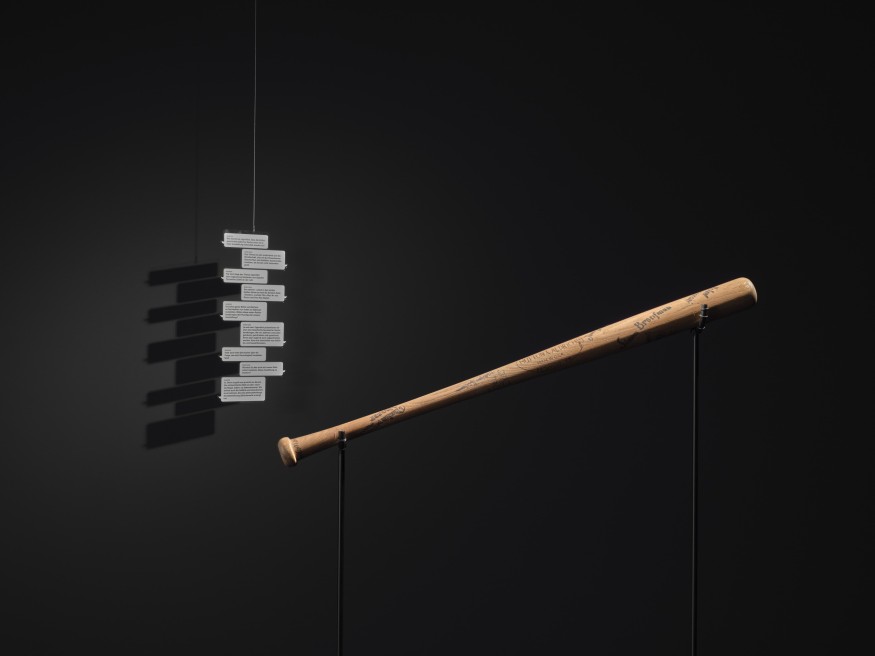
Elie Petit: Can you tell us about the origin of the idea to design an exhibition in a Jewish museum about revenge?
Mirjam Wenzel: The idea came to me while I was writing a review of “Disintegrate yourself”, the first collection of essays by the poet Max Czollek. His chapter “Inglorious Poets” was the strongest: with its allusion to the famous Tarantino film, it was devoted to the theme of revenge in the Jewish tradition. I immediately thought that this would provide a bold subject for an exhibition in a Jewish Museum like ours. I discussed the idea with my colleagues and we reflected on why the topic had not been presented in a Jewish Museum, yet. Why not? Because it mobilizes the powerful anti-Semitic trope that Jews are vengeful beings. So we decided that our exhibition should counter this narrative on the one hand and present the echoes and reflections of the topic in the bible, traditional Jewish texts and legends, on the other. Furthermore, we agreed that the exhibition should, at its core, refer to real acts of revenge by Jews against Nazi perpetrators and begin with narratives of Jewish vengeance in popular culture…
Erik Riedel: In recent years, the theme of Jewish revenge has appeared in a number of films, comic books… There is, of course, Tarantino’s “Inglorious Basterds” (2009), the Amazon Prime series “Hunters” with Al Pacino (2020) and numerous other less known examples. The figure of the Jewish avenger has become very present in popular culture, in general. However, it offers a perspective that, in Germany, hasn’t entered the general discourse on Jewish culture in the present, yet. Therefore, one of our starting points was to point out that persecution does not only result in victimhood but also produces fantasies of retaliation and revenge…
E.P.: Is it a taboo, especially in Germany, in your opinion?
E.R.: I’m not sure that the topic of Jewish revenge is strictly speaking a taboo. But it is definitely a sensitive topic. The situation in Germany with regard to the Jews is obviously particular: the official policy is very committed to the idea of reconciliation and dialogue. The political will is to create normalized relations, a partnership. These are the key words that often appear in public discourse.
M.W.: In Germany, Jews are still perceived primarily as victims. There has not yet been enough research on topics such as resistance, deviance and all forms of active and concrete responses by Jews to the violence committed against them. We wanted to open up a new perspective by emphasizing the fact that Jews, throughout history, have found ways of actively coping with reality – in real actions, as well as in fantasy. Therefore, the exhibition puts an emphasis on Jewish agency on one side and a focus on emotions such as rage and anger that are evoked by the experience of violence on the other. Both perspectives are not an integral part of the perception of Jews in the German public. But they are becoming more important for the third and fourth generation of Jews living in Germany, today. This exhibition is the result of an emergence of these younger voices…
E.P.: Is the theme of revenge present in some of the stories of the Jewish community in the city of Frankfurt where the exhibition is taking place?
M.W.: In our exhibition we tell the story of David Frankfurter, who in 1936 shot the head of the NSDAP in Switzerland, Wilhelm Gustloff. He came from a Frankfurt family. Another story of Jewish revenge in Frankfurt’s Displaced Persons Camp Zeilsheim is being told in the novel “Die Teilacher” by Michel Bergmann and his film “Es war einmal in Deutschland”. At the press conference to our exhibition, Doron Kiesel, director of the Jewish Academy that is currently being built in Frankfurt by the Council of Jews in Germany told another story: His parents decided to leave Israel and live in Frankfurt when he was still a child. At the age of 15, he decided that he wanted to find the murderer of his grandparents and kill them, right away. Our exhibition reminded him of this fantasy and empowered him to speak about it in public, for the first time… I think there are untold stories like that in many Jewish families that lived in Germany after the Holocaust. They are being discovered, now. And that’s something we meant to initiate. We wanted to enable a discourse on stories and fantasies that were repressed in order to keep on living among the Nazi murderers that were, in general, not being punished for their monstrous crimes.
E.P.: How did the press, the public and the institutions react to your proposal?
M.W.: It was received very positively. I was very aware that revenge is an ambiguous topic and that the exhibition could be received controversial. We created an advisory board to discuss particularly sensitive topics – like the title, for instance. And we had a concise communication strategy and reached out to particular persons and institutions, beforehand. In the end, the exhibition and the catalogue got very positive press reviews and became a huge success – both with regard to the amount of visitors and the public attention that it received as well as to the discourse it initiated.
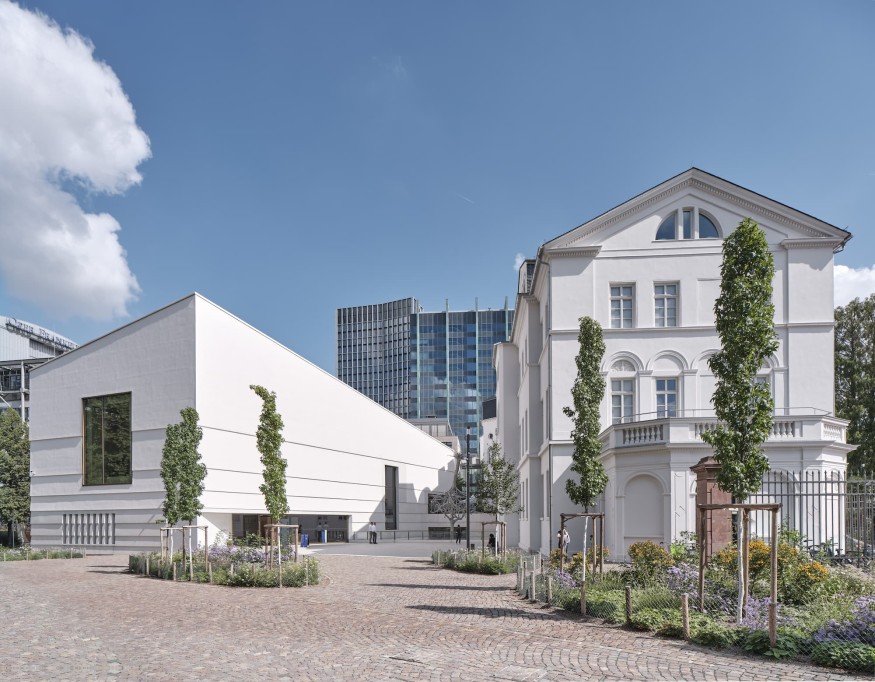
E.P.: Your work, both the exhibition and its catalogue, evokes Jewish thought – biblical and ancient – on the question of revenge. All the more so since texts from the Jewish tradition have been widely exploited by anti-Semites…
E.R.: Indeed. One area of the exhibition is devoted to unmasking false anti-Semitic allegations that instrumentalize and abuse these texts… For example, we show how certain quotations – like “an eye for an eye, a tooth for a tooth” – are constantly used by anti-Semites, since the Middle Ages, to assert that the Jewish religion is vengeful in an atavistic way. We explain that, contrary to popular belief and argument, the rabbinic interpretation of this quote has always been that it is not about blood vengeance. It is about justice, about seeking appropriate compensation, appropriate punishment, appropriate forms of conflict resolution.
M.W.: An eye for an eye, a tooth for a tooth, is a formula for retribution, or, to be more precise to the question of justice in retribution. In the Torah, there is a connection between vengeance and justice. God saying explicitly “vengeance is mine” and thereby confirms that he will make sure that justice is being done – particularly to his people.
E.P.: What actual cases of Jewish revenge are presented in the exhibition?
M.W.: One case is that of David Frankfurter which I already mentioned. After shooting Wilhelm Gustloff he was imprisoned and released in 1945. He wrote his memoir under the title “Nakam”, the Hebrew word already used in the Bible for revenge. This memoir was published only in Hebrew, until now. We will bring out the first German edition at the beginning of October. In the exhibition, we present other acts such as the Herschel Grynszpan’s attack on the German diplomat Ernst von Rath in Paris, in November 1938. We elaborate on Grynszpan’s motivation as member of a Polish-Jewish family that was expelled from the German Reich and deported to the No-Man’s-Land at the border to Poland. We present items of the Jewish Brigade in the British Army and tell the story of one member who tried Nazi war criminals by martial law in 1945. And, of course, we dwell on the NAKAM group of Abba Kovner. These are some of the episodes that make up the specifically historical part of the exhibition. But “Revenge: History and Fantasy” is not a historical exhibition. It is very important to emphasize that it is mainly a cultural historical exhibition – a presentation devoted to fantasies of revenge and narratives of vengeance that are based on the Jewish experience of extreme violence and aim at overcoming it. At the core of these narratives is the idea of a turning point: the experience of violence is directed against the aggressor. Thus, our exhibition describes revenge as an act of turning violence around – either by a person or by God, himself.
E.P.: In this regard, one element of the exhibition troubled me. It seemed to me that sometimes stories of resistance to oppression and domination were interpreted as stories of revenge. But resistance and revenge are very different things.
E.R.: I don’t think we confuse resistance with revenge. Revenge is a reaction to violence that has already happened, whereas resistance is a struggle in the present against ongoing oppression and violence. The theme of Jewish resistance has already been addressed occasionally by historians. There are some publications and exhibitions devoted to this subject. We therefore thought it necessary to draw a clear line between these two distinct realities. But of course, there can be hesitations or intertwinings. For example, we decided to include the story of Judith, from the Bible, quite early in the course of the exhibition. Now, one could argue that the story of Judith is not a story of revenge, because she killed the Assyrian general Holofernes before or during the siege, before the fighting began. So it is not, strictly speaking, an act of revenge, I agree. As we all know, this book of Judith is not part of the Hebrew Bible and presents a fictional story that contradicts the stories told elsewhere: We know from other books of the Bible that the temple was erased and that the Judeans were kidnapped and taken into captivity in Babylon. Therefore, the leader of the Assyrian army was not beheaded but successful. We know that the story, as told in the book of Judith, never happened. But we thought that telling the story as a form of counter-history and fiction of revenge was thought-provoking.
E.P.: Yes, it can be, in the case of Judith, a preventive action… To avoid persecution. Maybe it’s a story that’s meant to say, ‘Don’t wait until you have to think about revenge and kill the one who wants to kill you first’.
E.R.: Yes, maybe it’s the opposite of revenge. I don’t think these two concepts (resistance / revenge) are always opposed, it’s really a matter of debate. And I think that the exhibition is very much about questioning, about the debates that the theme opens up: Is there ever a legitimate motive to take revenge? What do these historical events and fictions tell us? Another important aspect that we had to address is that revenge is somehow considered a premodern concept. The idea of people taking justice into their own hands is not acceptable in our contemporary societies, and for good reason, of course. But a question arises: what if the state or the authorities do not work? What happens if justice is not been done? This is a very important question in the context of Jewish history and the Jewish present, especially in Germany, because the legal system was not effective in punishing Nazi criminals.
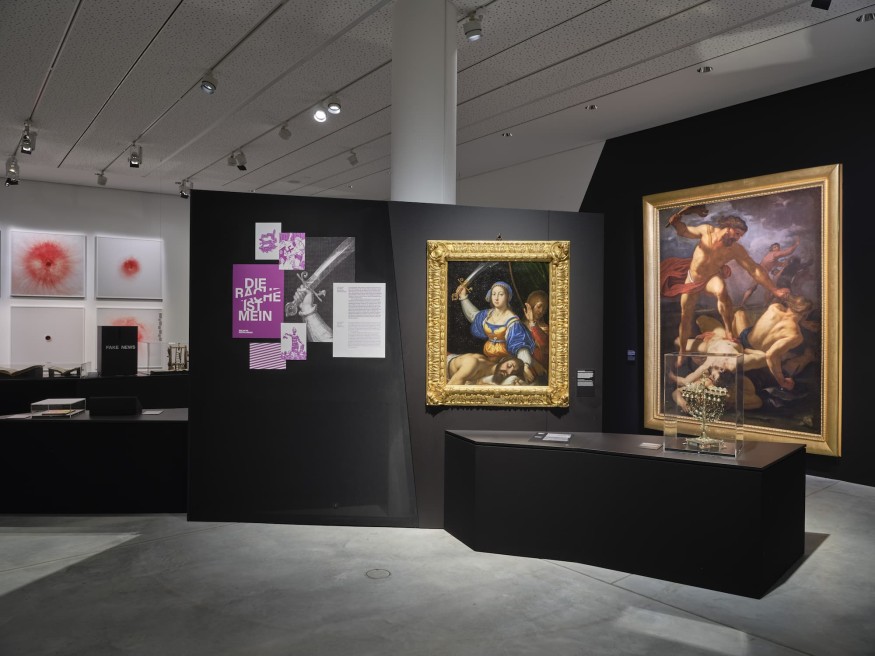
E.P.: The German way is definitely very specific on these issues. There is an ideology of reconciliation, which is obviously very problematic. But in this context, one can also find it strange to put forward this idea of revenge because it seems to me that it can be used to suggest that guilt could be alleviated by a Jewish action…
E.R.: Our exhibition offers a space where the visitor can imagine, discuss and elaborate on an ambiguous topic. We point out that there were not many acts of revenge during the Nazi period or immediately after the war. But there are a lot of fantasies and calls for revenge, particularly from the murdered. We confront visitors with testimonies that ask for vengeance and ask them implicitly what it means that justice never took place – neither in the court rooms nor in the endless administrative proceedings for compensation. This question is not an issue in the current political discussion or agenda. One might ask why? Where did this question of justice vanish to? It still has a life somewhere… In the last room of the exhibition, we present recent artistic positions on the subject and articulations in popular culture. There have been a lot of comics, films and television series on the topic, particularly in the last years. One of them is the feature film “Plan A” about the NAKAM group and Abba Kovner, who conceived one of the most radical revenge plans imaginable, which was to kill 6 million Germans in retaliation for 6 million Jews.
E.P.: In the exhibition, you add the cases of the Jewish pirates and the Jewish criminals, and it seems that no source links their actions to a motive of revenge…
E.R.: In the two cases you mentioned, the pirates and the criminals, it is true that there are few sources that tell us about their motives…
E.P.: If the motives are not precisely established and it can fit the anti-Semitic narrative, why add it to the exhibit? It denormalizes Jewish criminal action. If a Jew commits a crime, we must necessarily think that it is out of revenge?
E.R.: Well, there have been organized groups of Sephardic pirates that were active in the Mediterranean but also in the Caribbean, and they mainly attacked Spanish ships. So the question arises as to whether this can be seen as a kind of revenge against Spain which was, of course, the country that expelled all its Jews in 1492. This perspective is being presented in our catalogue by a renowned scholar of Jewish history who is an expert on Jewish piracy. It is furthermore being strengthened by the popular book of Edward Kritzler. According to Kritzler, there were more Jewish pirates than documented and some of them had explicitly Jewish intentions in their actions. This idea has been received very positively and enthusiastically among young Jews in the United States and Europe as well as by the rabbi of the Jewish community of Frankfurt, Julien Chaim Soussan, who spoke about it in the first episode of our Podcast to the exhibition.
M.W.: There is a connection between law, justice and revenge. We elaborate on this in one chapter of our exhibition called “Outlaws”. Jews have been excluded by law from a lot of organizations, professions and cities in most of Europe from the Middle Ages until Early Modern times. They were not allowed to settle down in many places, and when doing so, were expelled and murdered. This exclusion and sometimes persecution by law lead to deviances, or, better: to a life beyond law and to outlaw organizations. Throughout European history, Jews have found ways to organize themselves on the margins. Sometimes these organizations took actions against the oppressors. This is what interested us. The pirates who attacked the ships of the Spanish flotilla were descendants of Sephardic Jews expelled from Spain. The Jewish robbers that attacked villages were excluded from living there. The Jewish gangsters in US-American cities were fighting against the rise of Nazis organizations in the USA that were threatening their existence in the country they just immigrated to. All these actions were motivated by the precarious situation of Jews throughout history.
E.R.: The question of the motivation of a crime is a delicate one particularly when it comes to Jewish robbers in the 17th and early 18th century. They basically acted out of poverty, didn’t have a home or a steady income because they were not allowed to settle down and take up an orderly profession. So, they were forced to move around. They could work as handymen or small craftsmen, some did small-scale trade and some became criminals. This is the historical context, and the question arises as to how criminal behavior is also a rebellion – an act of revenge? – against an oppressive society. This is not exclusively a Jewish question.
E.P.: As you follow the exhibition, you realize that there are not many real stories of revenge: there are ideas of revenge, but the act of revenge is not the rule, far from it. A large part of the exhibition is about Jews who could or would take revenge, especially after the Holocaust. Revenge is part of a fantasy equation in a context where the enormity of the crime and the political and social circumstances after the Shoah make the work of justice seem impossible…
E.R.: Our idea in conceiving the exhibition was not to justify revenge but to underline that during the persecution, during the Shoah and in the immediate post-war period, the idea of revenge was very present. We found many sources – letters from deported, various testimonies from victims (I am thinking in particular of graffiti in prison cells) – that explicitly ask the survivors to take revenge. This need was very strong, undoubtedly psychologically necessary in the situation of an inevitable death approaching. However, this demand to respond to the horrendous crime by taking revenge has more or less gradually disappeared from consciousness after the war. In any case, with a few exceptions, it was not or no longer expressed openly in the public. All Jewish protagonists who were involved in the prosecution of Nazi criminals stressed that it was not about revenge, but about justice. After the war, a classic survivor narrative was that their form of revenge was that they had survived, created a family and had children…. Today, you can look on social media and you will find many photos on Instagram of elderly survivors surrounded by their children, grandchildren and great-grandchildren. Often you will read as a caption, “Here’s our revenge on Hitler!”. There has been an evolution in the perception of the idea of revenge. But the fantasy of revenge in its most classic form has not necessarily disappeared. The wave of films or fictions, in the wake of Tarantino’s “Inglourious Basterds”, shows that the topic is very present. There is a feeling of unfinished business when it comes to the Holocaust …

With what effect on the way in which Jews are now situated or perceived, especially in Germany?
M.W.: We received very positive responses from many persons in the Jewish community because they felt empowered to raise questions and speak about their emotions. I mean, still living in this country with what happened… As for the non-Jewish audience, which is the bulk of our visitors, I would make a distinction. I think that many Christian visitors reacted very strongly to the exhibition because it addresses a subject that is part of Christian anti-Judaism. Therefore, we received a lot of attention in the Christian press. In the last room of the exhibition we installed a large feedback wall. It is full of post-its, now. Nearly all the statements are very positive if not enthusiastic about the exhibition. But we don’t know who has written them. Do, let’s say, second generation non-Jewish Germans leave post-its in a Jewish Museum? I doubt it. But this group is very strong among our audience. So, we don’t really know how they react, but we know that they come. In one room we reproduced the quotes of those who were murdered asking for revenge. We installed them in big letters on the walls and enabled the visitors to take the whole letter with them. We had to refill the boxes every week because obviously many did.
E.P.: How, after having made this exhibition, would you define the word revenge?
E.R.: First of all, I would say that there is no easy definition. Revenge is a complex subject that encompasses many aspects… In a very concise way, I would say that revenge is a reaction to an injustice and violence suffered. Revenge is in a way one of the most basic human feelings or impulses. It is a thought that is very deeply rooted in human nature, so we have to deal with it.
E.P.: I don’t know if the expression exists in German, but in French they say that revenge is a dish that is eaten cold…
E.R.: I think there is a very similar saying in German as well. A very famous sentence by Heinrich Heine says: “Of course I am very willing to forgive my enemies, but only after they have been hanged”.

